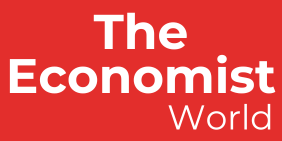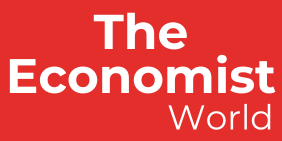Debt and money are not interchangeable financial tools. Edward Griffin, in his book, ‘The Creature from Jekyll Island’, correctly identifies the tension between politicians and monetary scientists. Politicians need money to facilitate fiscal spending, which is not possible without the help of monetary scientists. It is with their help (central bankers, private banking bosses etc) that new money is created through domestic lending. This form of monetary expansion is very similar to printing money.
Prolonged use of domestic debt leads to an increase in inflation, erosion of trust and a concerning debt to GDP ratio.
A lot of our public discourse is focused on outside lenders such as the International Monetary Fund or China. But the underlying issue is more domestic than international. According to the Ministry of Finance’s Semi-Annual Public Debt Bulletin (July to December 2024), domestic debt has risen to Rs49.88 trillion, accounting for 67.4 per cent of total public debt.
The external component of debt, at Rs24.13tr (33pc of total debt), is significant but lesser. Interest payments surpassed Rs5.1tr, rising from Rs4.2tr last year — an 18pc increase — primarily on domestic borrowing.
If green Sukuk is used to finance productive, climate-friendly projects rather than raising cheaper debt, it could set a new standard for responsible Islamic finance
As reported by the Business Recorder, recent SBP data shows a sharp 66pc drop in domestic borrowing this fiscal year, offering short-term relief, but not a solution. The interest burden means that every other rupee the federal government receives goes towards debt repayment; a precarious imbalance for a nation in dire need for development funds.
There is, however, a silver lining. With only 17.7pc of government securities on fixed rates, interest payments are also variable. This could be beneficial if rates decline, though it poses risks if they spike. The State Bank of Pakistan’s hawkish stance, keeping rates at 12pc, suggests that gains will be gradual, but this transition is a positive development.
Tradable government securities held by scheduled banks declined from 62pc in June 2024 to 55pc in December, while non-bank holdings rose from 18pc to 25pc, a sign of market deepening and wider investor confidence, if managed wisely. Maturity profiles have also improved, with 71pc of domestic obligations now medium to long term.
The average time to maturity for domestic debt also improved, increasing from 2.9 years to 3.4 years in the same period. Most of this debt is in the form of Pakistan Investment Bonds (63pc) and Sharia-compliant Sukuk (12pc), while short-term T-bills now make up just 17pc.
Now, there is a difference between thinking long term and acting long term. The finance minister’s recent expression of interest in issuing panda bonds worth $200-250 million seems to be a move in the right direction.
Panda bonds are Chinese renminbi-denominated securities floated in China’s domestic bond market. Panda bonds generally offer lower yields than Eurobonds; this makes them attractive for countries like Pakistan that seek to reduce debt servicing costs while diversifying away from dollar-denominated borrowing.
Their attraction is not only financial but also strategic. In contrast to the more politicised, traditionally bilateral Belt and Road Initiative loans, panda bonds are regulated under China’s capital market law. They need credit ratings, disclosures in the markets, and the confidence of the investor, not politics.
This marks a paradigm shift for Pakistan’s external financing model, from opaque, state-to-state deals to transparent, market-based capital access.
However, repayment remains a critical challenge. As panda bonds must be repaid in yuan, Pakistan needs to make sure that it has a constant stream of inflows to avoid foreign exchange stress, especially if the yuan appreciates against the rupee.
Pakistan’s panda bond ambitions stem from a Chinese initiative which is informally called the “Shanghai Plan”. First proposed in 2021 by Zhou Chengjun, Director of the People’s Bank of China’s Finance Research Institute, it represents China’s emerging model for global debt restructuring.
As traditional mechanisms, like the G20’s Common Framework, have stalled due to creditor coordination problems, China is filling the gap by proposing market-based, instrument-linked solutions. These include panda bonds, green bonds, and performance-tied debt instruments that allow countries to refinance obligations in exchange for delivering on infrastructure, climate, or development targets.
This new framework borrows from the logic of the Brady Bonds that helped Latin America exit its 1980s debt crisis. Under this model, China’s development and commercial banks can convert existing bilateral loans into marketable panda bonds, reducing principal or interest through negotiated terms.
Instead of writing off debt entirely, countries restructure it by issuing new, longer-term instruments backed by multilateral guarantees or linked to project performance. In theory, this helps both the borrower and the lender; the country gets relief and liquidity, while creditors avoid a haircut by staying invested under revised terms.
Even so, Pakistan practices a kind of quiet monetary expansion. When the government sells T-bills to commercial banks, it receives cash that is soon recycled into the economy through salaries, subsidies, and public spending. This increases M2, or broad money supply, boosts demand, and puts pressure on the rupee. No new notes are printed, but it feels as if they were.
In reality, the government borrows from local banks, which hold T-bills as assets. These bonds remain liquid, and when their value is spent into the economy, they fuel the illusion of growth without real productivity gains.
The key lesson is this: debt is a tool, not a trick.
Argentina defaulted twice in two decades, not because it borrowed, but because it relied too heavily on short-term, high-cost domestic bonds without a credible repayment plan. When investor confidence collapsed, interest rates soared and default became inevitable.
Greece made a similar mistake. It issued bonds under domestic law, mostly bought by foreign investors, but failed to match borrowing with economic reforms. Austerity measures followed, but each euro cut shrank the economy more than expected, reducing tax revenues and worsening the debt burden.
Pakistan may be entering a new phase. Instruments like the green Sukuk, the Panda bond, and the floating-rate pivot could be genuinely valuable if backed by reform. The government is also working on a sovereign sustainable finance framework, which includes an asset-light Sukuk model designed to attract environmental, social, and governance linked capital.
If the green Sukuk is used to finance productive, climate-friendly projects, rather than simply raise cheaper debt, it could set a new standard for responsible Islamic finance. But if reform stalls, even the best tools become cosmetic. We need projects that generate real returns, protect against currency risks, and treat every borrowed rupee as a public promise.
Borrowing is easy. Delivery is hard. And a nation that keeps breathing on borrowed breath will eventually run out of air.
The writer is an economist and an educationist.
Published in Dawn, The Business and Finance Weekly, April 7th, 2025


